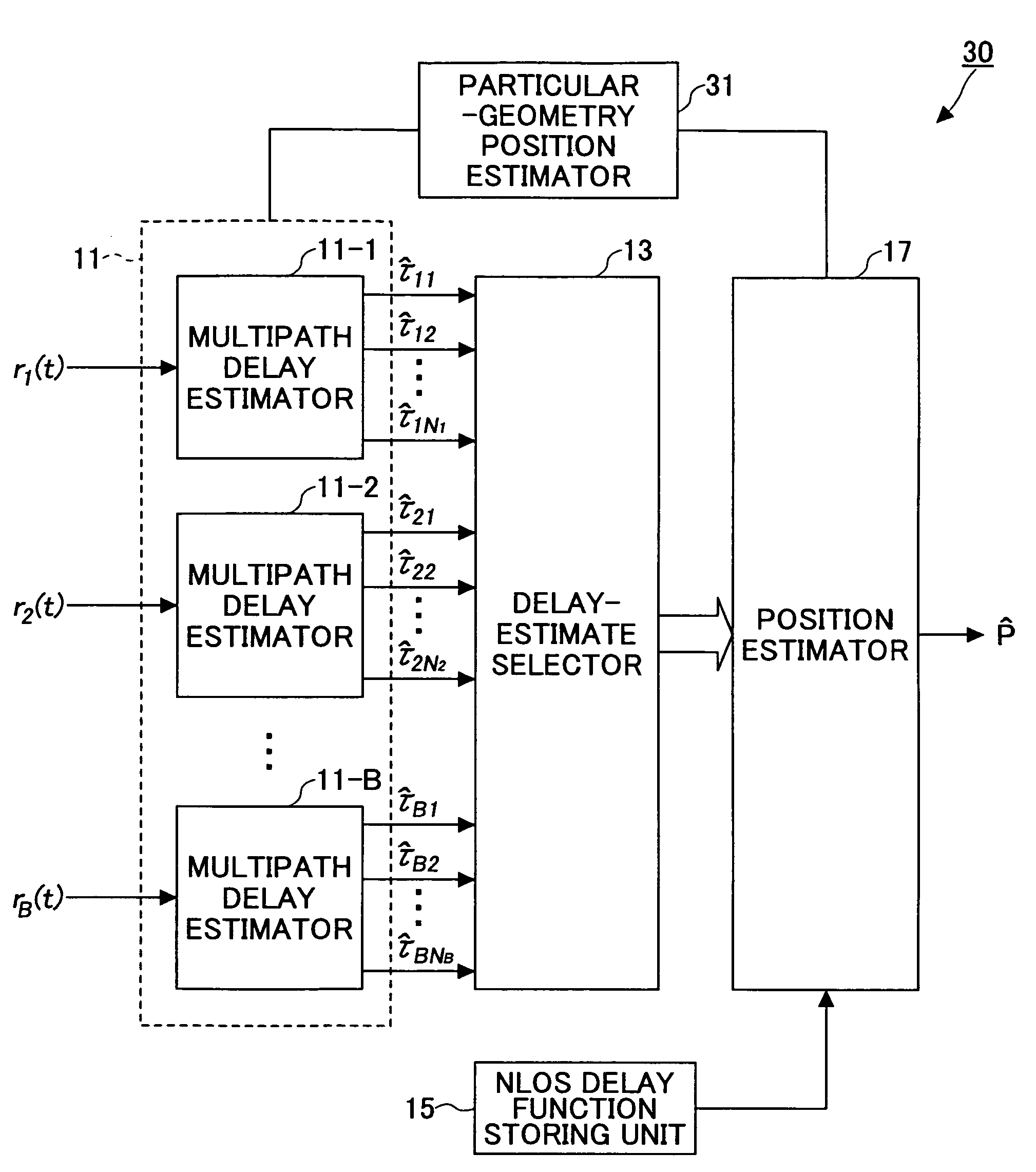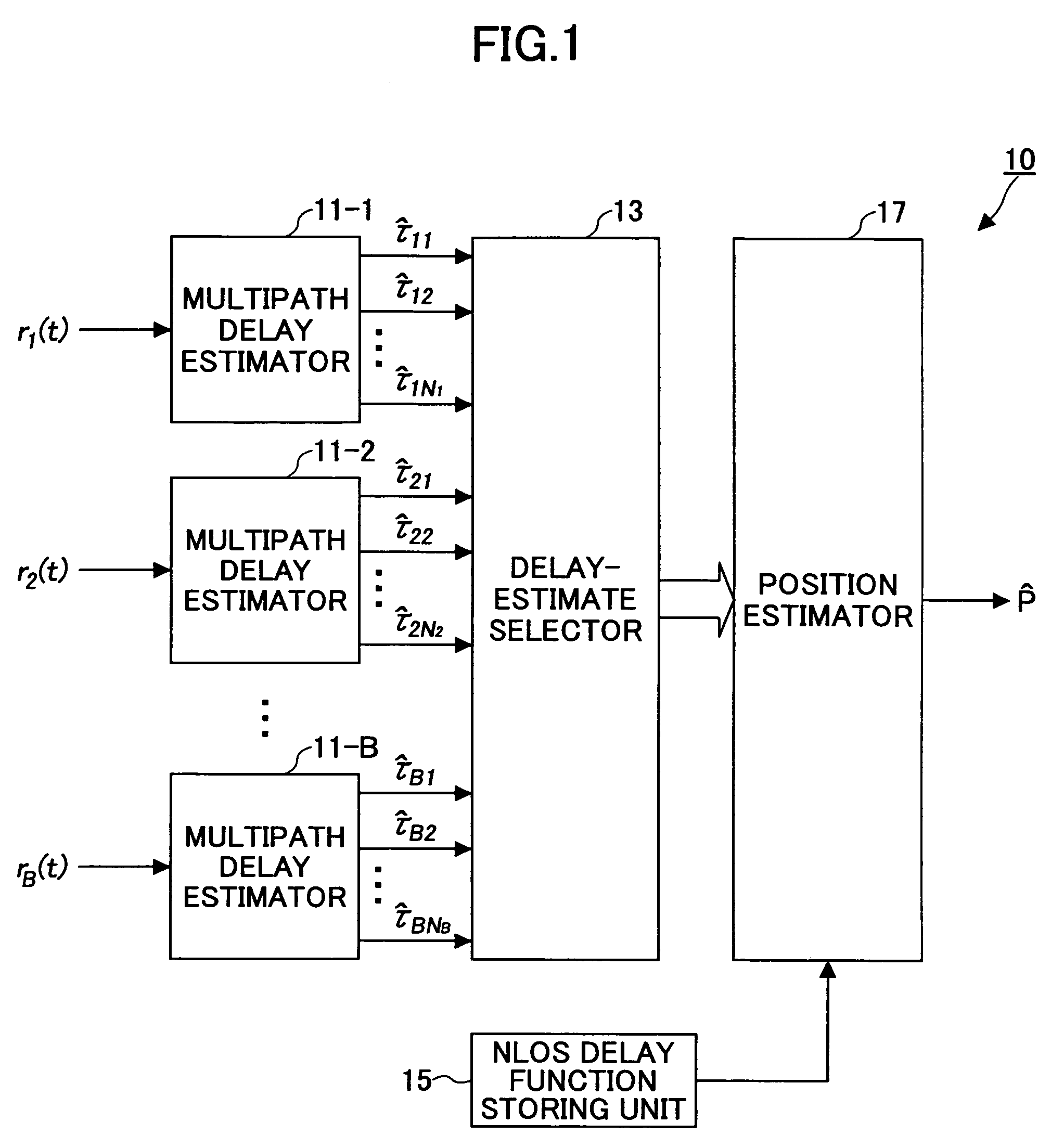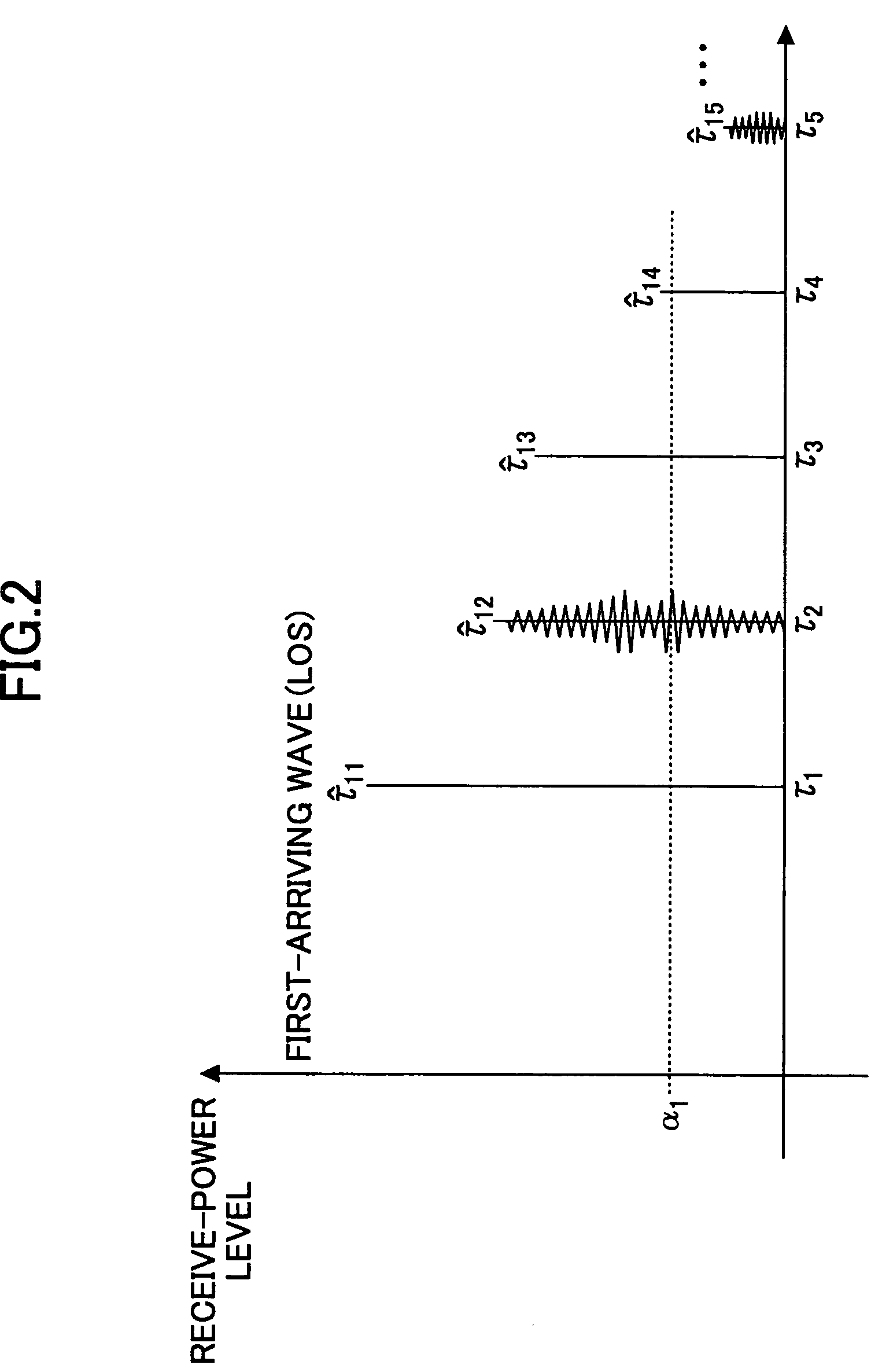Wireless positioning approach using time delay estimates of multipath components
a multi-path component and time delay technology, applied in the field of wireless positioning technique, can solve the problems of inability to achieve optimization, difficult application of ray tracing model used in underwater applications with acoustic positioning scheme to mobile communication channels, and inability to achieve accurate position estimation
- Summary
- Abstract
- Description
- Claims
- Application Information
AI Technical Summary
Benefits of technology
Problems solved by technology
Method used
Image
Examples
first embodiment
[0044]FIG. 1 is a schematic block diagram of a wireless positioning apparatus according to the first embodiment of the invention. In this embodiment, the positioning scheme is applied to a synchronous system. A wireless positioning apparatus 10 includes multipath delay estimators 11-1, 11-2, . . . , 11-B that receive signals r1(t), r2(t), . . . , rB(t), respectively. Each of the multipath delay estimators 11-1 through 11-B is configured to estimate multipath delay components from the associated received signal. The multipath delay estimators 11-1 through 11-B may be treated collectively as a multipath delay estimator 11.
[0045]The wireless positioning apparatus 10 also includes a delay-estimate selector 13 (which may be referred to simply as “selector 13”) that selects appropriate delay estimates from the multipath delay components according to a predetermined criterion, an NLOS delay function storing unit 15 that stores an NLOS delay function defining prior information about non-lin...
second embodiment
[0074]Next, the second embodiment of the present invention is described in conjunction with FIG. 6 and FIG. 7. In the second embodiment, the wireless positioning technique is applied to a non-synchronous system. FIG. 6 is a schematic block diagram of a wireless positioning apparatus 50, and FIG. 7 is a flowchart showing the operation performed by the wireless positioning apparatus 50.
[0075]The wireless positioning apparatus 50 includes multipath delay estimators 51-1, 51-2, . . . , 51-B that receive signals r1(t), r2(t), . . . , rB(t), respectively. Each of the multipath delay estimators 51-1 through 51-B is configured to estimate multipath delay components from the received signal. The wireless positioning apparatus 50 also includes a selector 53 that selects appropriate delay estimates from the multipath delay components according to a predetermined criterion, a TDOA data generator 54 configured to generate time-difference-of-arrival (TDOA) data based on the selected delay estimat...
third embodiment
[0085]Next, the third embodiment of the present invention is described with reference to FIG. 8 through FIG. 10. In the previous embodiments, the position of the mobile station is estimated based on useful multipath delay components selected from multipath delay profiles of received signals at multiple base stations. This method is based on the premise that there are enough base stations involved in position estimation.
[0086]The third embodiment is designed to still allow time-delay based position estimation to a certain degree of accuracy even in unfavorable MS-BS layouts that generally do not allow position estimation using received signals. Such unfavorable MS-BS layouts include a case in which the number of base stations available for position estimation is two or less.
[0087]The following two cases in particular MS-BS geometry are observed.
(Case 1)
[0088]The signal received at only one base station is available in the two dimensional positioning. In this case, delay estimation, t...
PUM
 Login to View More
Login to View More Abstract
Description
Claims
Application Information
 Login to View More
Login to View More - R&D
- Intellectual Property
- Life Sciences
- Materials
- Tech Scout
- Unparalleled Data Quality
- Higher Quality Content
- 60% Fewer Hallucinations
Browse by: Latest US Patents, China's latest patents, Technical Efficacy Thesaurus, Application Domain, Technology Topic, Popular Technical Reports.
© 2025 PatSnap. All rights reserved.Legal|Privacy policy|Modern Slavery Act Transparency Statement|Sitemap|About US| Contact US: help@patsnap.com



